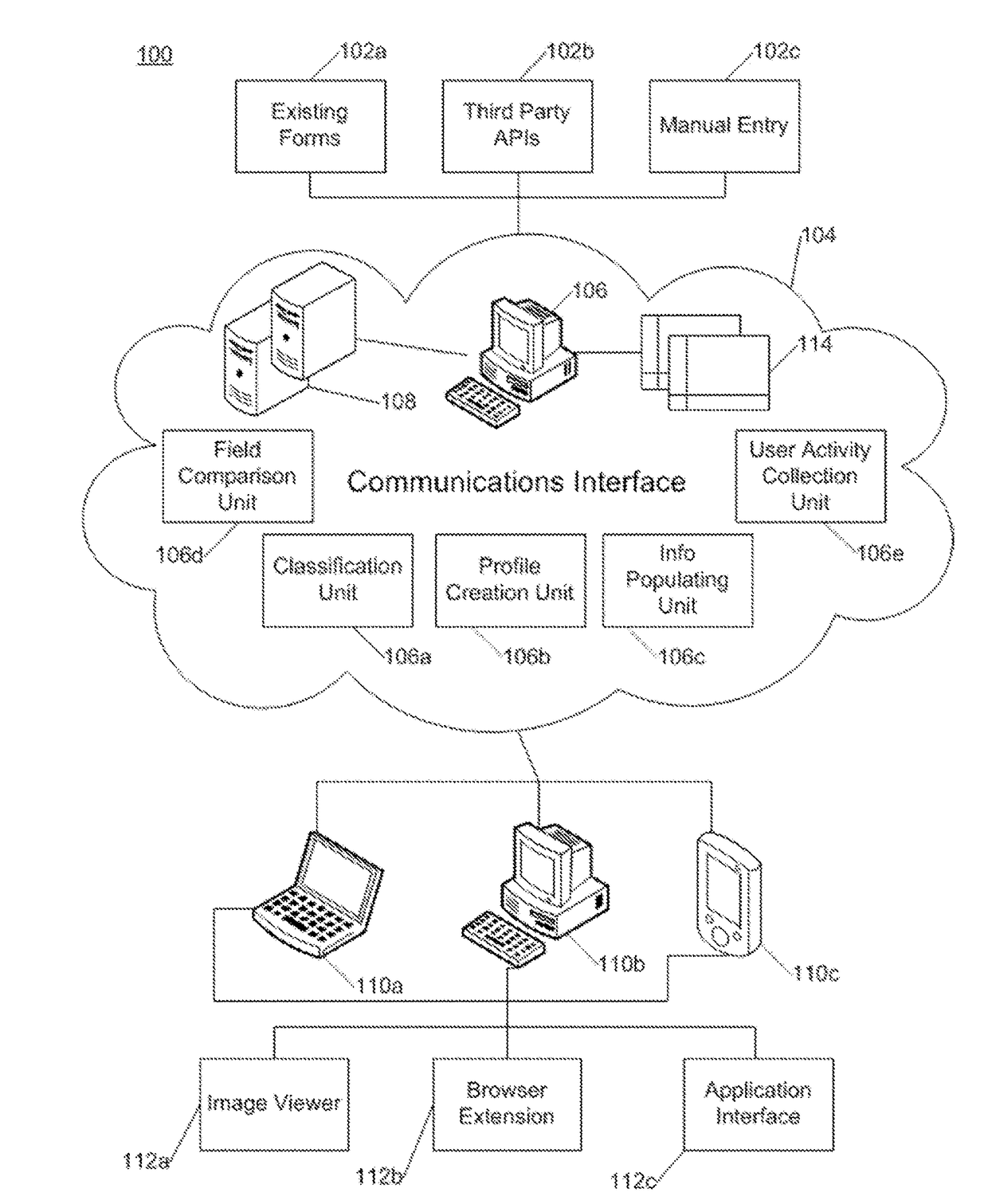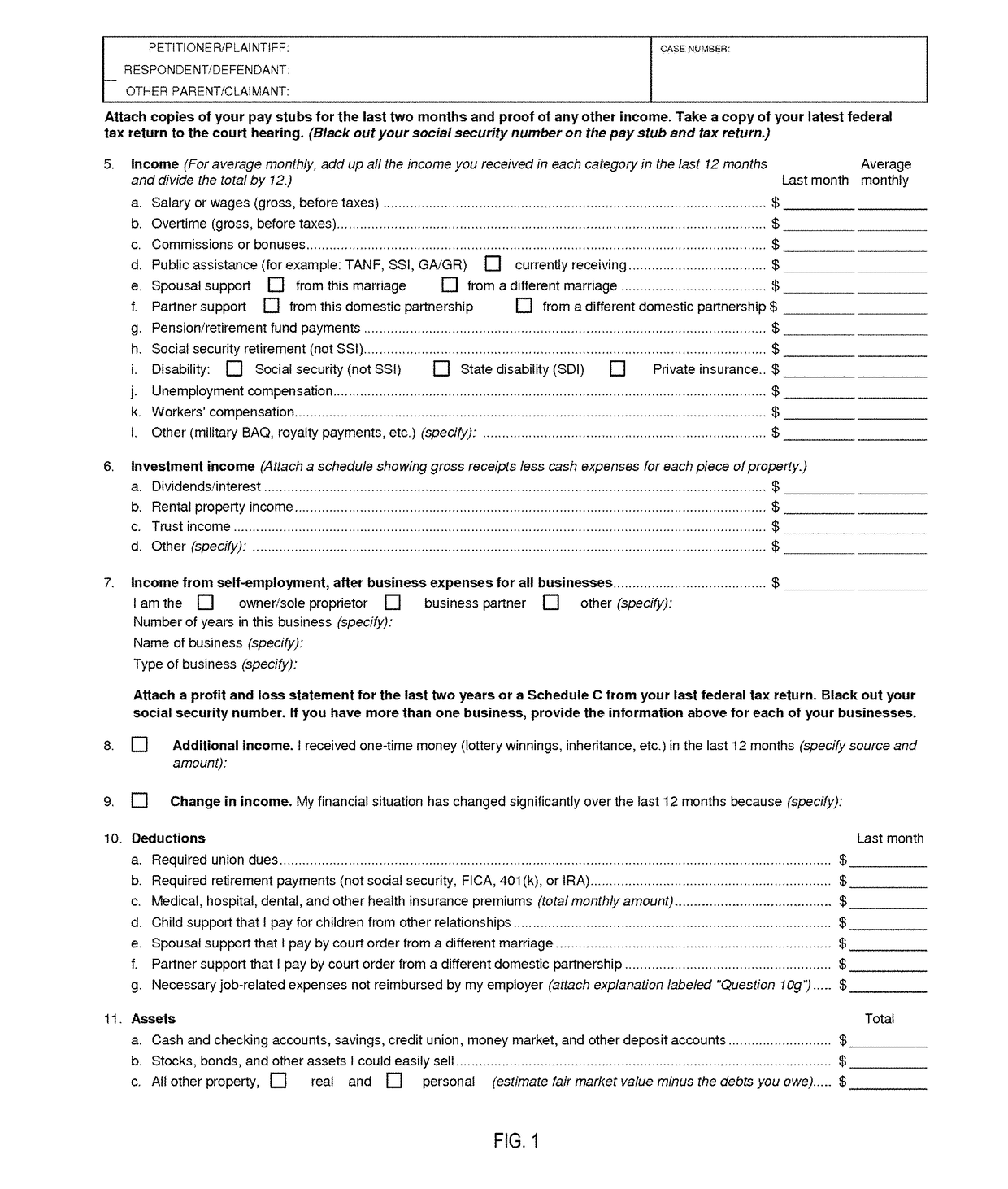However, much of the information required in these forms is common to other forms, and yet users manually repeat populating the form inputs with the same information over and over again.
The ability to collect, organize, update, utilize and reapply the input information required in these electronic documents, forms and applications remains highly difficult.
While some applications have been developed to store certain basic information about a user such as the user's name, address and financial information the ability to organize, access and, apply this stored information for additional online activities remains very limited, especially when detailed input information and / or computations are required to complete forms such as college applications and family law declarations.
While these tools can save time and provide effective tools for budgeting etc., they do not address the numerous circumstances in which a user is required to provide personal information. financial information, forecasts, categorized expenditures, etc., in a specific format or in accordance with specific forms, etc.
The amount and complexity of the information needed for a form such as this typically requires the person completing the form such as the party to the divorce or an attorney to spend a significant amount of time obtaining all of the needed information and even performing calculations of information to obtain the desired values.
Even well-organized, financially savvy users using currently available personal financial
software tools find completing and updating these forms to be burdensome, time-consuming, confusing, and susceptible to mistake.
The college application process is a high
anxiety time for students and very often, their parents.
Also, college applications and financial aid opportunities have many different deadlines.
It is very difficult to stay organized and keep on top of all the information, deadlines and applications submitted.
Moreover, the breadth of
electronic data, which nowadays inevitably extends to private and sensitive information, necessarily attracts a host of bad actors.
The same
data security mechanisms swill generally remain in place until a significant security breach is detected, at which point the entire data storage location may have already been compromised.
Data that have been stored based on standard relational data models are particularly vulnerable to unauthorized access,
Individual data records (e.g., name, address,
social security number,
credit card number, and
bank account number) stored in separate storage locations are typically accompanied by a common
record locator indicating logical nexus between the
data records (e.g., associated with the same user).
As such, unauthorized access to any one data
record may
expose sufficient information the user identification number) to
gain access to the remainder of the
data records.
Although numerous
data security methods are available, implementing a flexible roster of seamlessly integrated and complementary
data security solutions at a single data storage location remains an enormous challenge.
For example, while combining security solutions will normally increase data security, incompatibilities between different solutions may in fact give rise to additional security risks.
The conventional login process is associated with a number of documented weaknesses, For example, in many systems, the login step is commonly considered a part of the
user interface (UI) and a separate entity from the security bubble.
The problem is magnified in cases where in-house developers, having limited background in security, attempt to build custom login
authentication and
authorization systems.
As such, a malicious user can potentially have access to other users' data once that user is successfully completes the login process.
But these issues are also exacerbated by the fact that much of the data that is created today is created or accessed at a
client endpoint, e.g., a computer,
laptop, smartphone, tablet,
Internet of things device etc.
Even if the issues described above can be solved for data stored and retrieved at a
server, there is the additional problem of securing the data at the endpoint.
User uptime is maintained when a replacement KMS is spun up quickly since access to encrypted data will not be possible unless the KMS is constantly up.
Another approach commonly used, for databases is to develop
database query statements that check for any number of restrictions before allowing access to the data The problem with all these solutions is that they do not provide an easy way to have granular control t the data item level and these restrictions themselves are not universally encrypted.
Finally, there are many
malware solutions that monitor unusual running processes that could be a sign that there is an infection.
Being that
ransomware is continually evolving and adapting, many of these solutions have been losing ground to the criminals.
The greatest challenge is maintaining performance within acceptable limits and every method either slows the search process down or introduces a security
weakness.
These custom implementations make It difficult to leverage
third party search tools.
 Login to View More
Login to View More  Login to View More
Login to View More 


